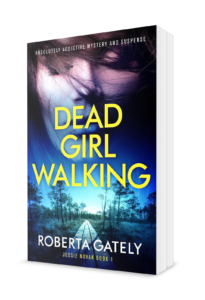Behind The Book – Dead Girl Walking
I am a nurse who has spent much of my career in the ER and, as with so many ER nurses, our roles include a significant bit of detective work and skills. From those first moments in Triage, whether the patient has arrived on foot or via ambulance, it is the nurse who will undertake the initial assessment—eliciting symptoms, evaluating complaints, assessing the status of the patient and initiating the work-up including (depending on the hospital policies) ordering labs and X-rays when indicated. The results help to peel away the layers of the problem, eliminating differential diagnoses in much the same way that detectives eliminate suspects and weapons through detailed study of the available data that the scene and the victim provide. Sorting through those diagnoses is, in many ways, akin to solving a crime.
And ERs see their fair share of those crime victims who’ve survived, at least for a time—some with gunshot wounds, stab wounds and still others with the blunt trauma that a physical assault delivers. The mechanism of injury is a vital part of the ER staff’s work-up and ultimately may influence our treatment. Sometimes that mechanism is obvious—a gunshot or stab wound—and the circumstances surrounding the injury don’t really figure into our plans of immediate care. But there are those patients with injuries that would be best sorted out with a backstory to help understand the underlying injury. For example, the source of blunt trauma—from an auto accident or a fall or an assault, can change the diagnostic work-up, treatment and eventually, the outcome.
And so, not unlike detectives, the staff must approach each case with a fresh but experienced eye to put together the pieces of the puzzle. In the ER, we strive to keep our patients alive and return them to good health. For homicide detectives, it is not the struggle to save a life. Instead, it is the challenge to find the killer, and the best source of clues will come from the victim’s body and the scene of the crime. Working with the Medical Examiner and forensics team, the detectives will sort through the evidence in much the same way that ER nurses do—painstakingly evaluating the evidence at hand.
It is no surprise that ER nurses often see ourselves as detectives, eager to put together pieces of the jigsaw and make a diagnosis or help to solve a crime. And that is just what my main character, ER nurse and part-time detective, Jessie Novak, does in Dead Girl Walking, Book 1 of the Jessie Novak series. Jessie Novak’s ER expertise, healthy skepticism, and innate curiosity, will guide her as she strives to solve some of Boston’s grittiest crimes. I hope that you’ll have a read and find yourself as intrigued reading about Jessie Novak as I am writing about her.
*Originally published in Crime Spree magazine